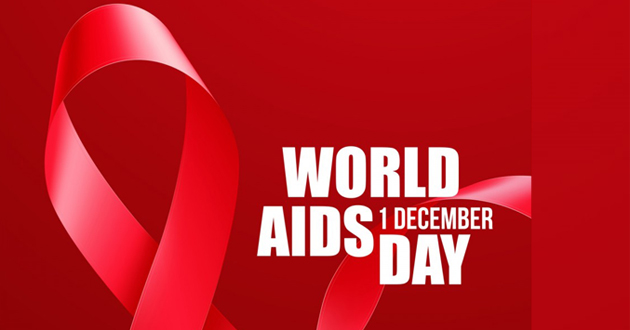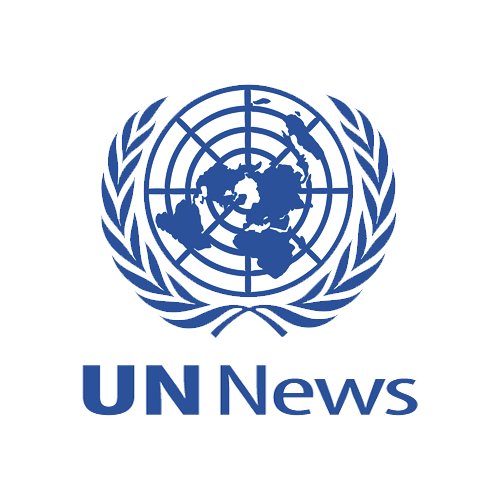World AIDS Day: UN calls for renewed commitment to make epidemic ‘a thing of the past’


The world will not achieve the Sustainable Development Goals (SDGs) – which include the target of ending AIDS by 2030 – without people attaining their right to health, the United Nations said Friday, marking World AIDS Day with a strong appeal for the full realization of this fundamental right by everyone, everywhere.
“The right to health is a fundamental human right – everybody has the right to the enjoyment of the highest attainable standard of physical and mental health, as enshrined in the International Covenant on Economic, Social and Cultural Rights,” Michel Sidibé, Executive Director of the Joint UN Programme on HIV/AIDS (UNAIDS) said in his message on the Day.
Indeed, the right to health is linked to all the SDGs and “is interrelated with a range of other rights, including the rights to sanitation, food, decent housing, healthy working conditions and a clean environment.”
He explained that it includes: equal access to health care; adequate health-care infrastructure; respectful and non-discriminatory health-care services; and that healthcare must be medically appropriate and of good quality.
“But the right to health is more than that,” he continued, saying that with it, “people’s dreams and promises can be fulfilled.”
Mr. Sidibé pointed out the most marginalized and affected still face challenges in accessing urgently-needed health and social services, asserting “we all must continue to stand shoulder-to-shoulder with the people being left behind and demand that no one is denied their human rights.”
“For all the successes, AIDS is not yet over. But by ensuring that everyone, everywhere accesses their right to health, it can be,” he concluded.
In his message for the Day, Secretary-General António Guterres said that “the world is well on its way to meeting the target of ending the AIDS epidemic by 2030,” noting that nearly 21 million people living with HIV now have access to treatment and this number should grow to more than 30 million by 2020.
With AIDS-related deaths and new HIV infections declining, there is great hope that the world can deliver on its promise, he added.
However, some parts of the response to HIV are lagging behind. “In some regions of the world, hard-won successes are being reversed, with rising numbers of new HIV infections and AIDS-related deaths,” Mr. Guterres warned, calling for “a renewed commitment to finish what we have started and to make the AIDS epidemic a thing of the past.”
For her part, Audrey Azoulay, the Director-General of the UN Educational, Scientific and Cultural Organization (UNESCO), stressed the right to quality education for all, because the two goals – health and education – go hand in hand. “This linkage stands at the heart of the 2030 Agenda for Sustainable Development and the UNAIDS 2016-2021 Strategy, she explained.
As outlined in UNESCO’s Strategy on Education for Health and Well-Being: Contributing to the Sustainable Development Goals, health and education are mutually reinforcing: healthy learners learn better, and better-educated learners are healthier.
“They are also mutually dependent – without the right to education we cannot truly fulfil the right to health,” Ms. Azoulay continued, stressing that in a world where young people – especially girls and young women – bear a disproportionate burden of HIV and AIDS, “we all must recognize that comprehensive sexuality education is central to their right to health, and to the health of all societies.”
Picking up that thread in her message, Phumzile Mlambo-Ngcuka, the Executive Director of UN Women, said that according to UNAIDS, every four minutes, three young women become infected with HIV.
“They are clearly not enjoying their right to health, nor will they, until we are able to reverse the inequalities and discrimination that fuel HIV spread. Those whose health and future are currently least prioritized must become our focus, if we are to achieve the changes we seek,” she said.
As such, leaving no woman or girl behind in the HIV response means ensuring their meaningful participation and engagement in designing that response, improving access to services and demanding their right to health.
“To do that, we foster women’s voices and leadership and support their place at decision-making tables,” Ms. Mlambo-Ngcuka continued, adding that in 2016, UN Women supported networks of women living with HIV in 31 countries to increase their engagement in the national HIV responses. “This World AIDS Day, UN Women calls for a commitment to prioritize and reach all the women and girls being left behind in the HIV response: every last woman and girl.”
Threat of complacency
Meanwhile, according to the UN Children’s Fund (UNICEF), in 2016, 120,000 children under age 14 died of AIDS-related causes while hourly, 18 were newly infected.
The 2017 UNICEF Statistical Update on Children and AIDS, launched Friday, projects that if current trends persist, there will be 3.5 million new adolescent HIV infections by 2030.
“It is unacceptable that we continue to see so many children dying from AIDS and so little progress made to protect adolescents from new HIV infections,” said Dr. Chewe Luo, Chief of HIV for UNICEF.
“The AIDS epidemic is not over; it remains a threat to the lives of children and young people and more can and should be done to prevent it,” he added.
A UNICEF analysis of demographic trends and new HIV data reveals that targets set in the 2020 Super-Fast-Track framework developed in 2016 to end AIDS among children, will not be achieved.
While noting that mother-to-child HIV transmissions have declined and two million new infections in children have been averted, UNICEF warns that such progress must not lead to complacency, saying that progress in preventing, testing and treating HIV infections among adolescents has been unacceptably slow.
“To continue at this slow rate of progress is to gamble with the lives of children and commit future generations to a preventable life of HIV and AIDS,” Dr. Luo added. “We must act urgently in order to sustain any gains we have made in the past decade.”
To address HIV-response gaps, UNICEF proposes utilising emerging innovations; scaling-up the response for children; and strengthening governments’ capacity to collect of comprehensive, disaggregated testing and treatment data.
Innovative solutions must be adopted to speed up progress in preventing HIV infection of children and ensuring those living with HIV get the treatment they need.
Source:
